Lyrical Abstractionist - Gary Hudson
Art Lives
Gary Hudson
1936-2009

Chapter 1
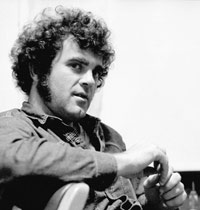 When I was 9 years old my father was in the South Pacific in the war, 1945. My mother who although a very bright woman was not sophisticated in any way. We lived in Penn Yan, a small town in upstate New York, very rural. There was a Russian émigré woman in the town who gave art lessons in her home. My mother for some reason put me in her class where we drew [from] live models on a pedestal wearing tutus. I saw a couple of those drawings about 20 years ago and they weren t half bad. To this day I have no idea what possessed her to do that. When I decided to be a painter in 1958 [after] I saw my first Jackson Pollock, there was the reaction among most people that one was crazy. When I landed in France people were very respectful when one called oneself a painter. When I met Franz Kline at the Cedar Bar the first time he took me over to the table where he was sitting with other artists and said that I was a painter, not a student but a painter. These four incidents are likely what made me paint for the last 46 years.
When I was 9 years old my father was in the South Pacific in the war, 1945. My mother who although a very bright woman was not sophisticated in any way. We lived in Penn Yan, a small town in upstate New York, very rural. There was a Russian émigré woman in the town who gave art lessons in her home. My mother for some reason put me in her class where we drew [from] live models on a pedestal wearing tutus. I saw a couple of those drawings about 20 years ago and they weren t half bad. To this day I have no idea what possessed her to do that. When I decided to be a painter in 1958 [after] I saw my first Jackson Pollock, there was the reaction among most people that one was crazy. When I landed in France people were very respectful when one called oneself a painter. When I met Franz Kline at the Cedar Bar the first time he took me over to the table where he was sitting with other artists and said that I was a painter, not a student but a painter. These four incidents are likely what made me paint for the last 46 years.
Read More... click again to close.
[After high school and a year at Colgate University] I was a marine until the age of twenty when I crashed a vehicle and was left in a wheel chair. I had a difficult adjustment to this and after being released from the hospital in 1956 I went to New York City to live. This is when I started painting. I attended the New York School for Social Research and studied with Manolo Pascual. At the time it was a hotbed of leftist social ideas and of course the great Orozco painting was there, as I assume it still is. I was a friend of one of the founders, Wooley Mayer, sister to Albert Mayer the father of city panning [and]an extraordinary woman. I also attended the Cedar Bar, where I met a lot of the AEs [Abstract Expressionists] of the second generation AEs. Franz Kline was very kind to me as was Joseph Stefanelli, Al Held and many others. I also attended meetings at "The Club" where Rosenberg often held forth, a social and artistic organization of mostly 2nd generation sense of camaraderie of the artists in New York who came up before these was a New York art artists in New York who came up before there was a New York art establishment. I saw DeKooning's first one man show and saw Jackson Pollock in a very dire state a couple of times. I had little confidence and no ability at that time that I can recall but was accepted by stating that I wanted to be a painter. Few used the word artist at the time, it was considered arrogant. It was the tail end of the Beat generation and having completely consumed Alan Watts and D.T. Suzuki as well as Kerouac, Ginsberg and The Evergreen Review, I headed for California - Venice and San Fancisco.
In San Francisco I spent some time with those people [as well as] Greg Corso, Peter Voulkos who was one of the most generous of the artists I met, and the young but wild and talented Mark di Suvero. Mark, at the time a student, with a group of friends was sticking great huge beams and pieces of steel in the tidal flats of the bay near Oakland. I was trying to paint all this time and the reason I am recalling all this is to give you an idea of how I leaned about art - not much school but a lot of osmotic activity. It wasn't really considered de rigueur to attend univertisty to learn art and I guess I still to some degree carry that attitude with me. The atmosphere was very intense and underground in those days. One felt subversive and clandestine and elite and outcast. It was a very fecund time.
Chapter 2
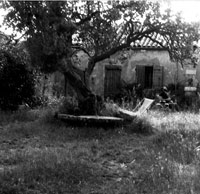 Upon returning from the California sojourn, around 1958, I began to make plans to live in France. I went first to Aix-en-Provence to live and found a studio at Le Chateau Noir, in the country studio of Cezanne in view of Mont St. Victoire. On my patio was the famous olive tree still living and a few hundred yards from the Bibemus Quarry. The French artist [Pierre] Tal-Coat had also livedthere and there was a paintingof his on my door. In Aix, I drank with André Masson on occasion, went to look at Picasso's villa, wondered at all the Roman viaducts et cetera and continued to paint. At this time I was a figurative painter, somewhat in the style of balthus, although at the time I had seen a few [of his] things but was not conversant with them. They were psychological groupings of figures which were very stylized. Needless to say I haunted the museums and went to Vallauris, where Picasso was working on ceramics and saw all of his ceramics at the studio where he worked with the master there before anyone had ever seen them. The Matisse Chapel had recently opened and that along with the Chapel at Ronchamps of Corbusier rocked me strongly. The Matisse drawing at the chapel were highly enabling for me. I did not fully understand them until much later but they were a gaping precipice into which one could easily fall. In a way they frightened me because of the liberation that they evoked. It took many years to digest their power. In Aix I saw Camus speak at the University a few days before he was killed. I was a very devoted Zen-Existentialist at the time and had read all of Camus and because he was feuding with Sartre, naturally I was anit-Sartre. He was a great speaker, very sympatique. His death was a bit of a seismic shift in France at the time (during the Algerian War).
Upon returning from the California sojourn, around 1958, I began to make plans to live in France. I went first to Aix-en-Provence to live and found a studio at Le Chateau Noir, in the country studio of Cezanne in view of Mont St. Victoire. On my patio was the famous olive tree still living and a few hundred yards from the Bibemus Quarry. The French artist [Pierre] Tal-Coat had also livedthere and there was a paintingof his on my door. In Aix, I drank with André Masson on occasion, went to look at Picasso's villa, wondered at all the Roman viaducts et cetera and continued to paint. At this time I was a figurative painter, somewhat in the style of balthus, although at the time I had seen a few [of his] things but was not conversant with them. They were psychological groupings of figures which were very stylized. Needless to say I haunted the museums and went to Vallauris, where Picasso was working on ceramics and saw all of his ceramics at the studio where he worked with the master there before anyone had ever seen them. The Matisse Chapel had recently opened and that along with the Chapel at Ronchamps of Corbusier rocked me strongly. The Matisse drawing at the chapel were highly enabling for me. I did not fully understand them until much later but they were a gaping precipice into which one could easily fall. In a way they frightened me because of the liberation that they evoked. It took many years to digest their power. In Aix I saw Camus speak at the University a few days before he was killed. I was a very devoted Zen-Existentialist at the time and had read all of Camus and because he was feuding with Sartre, naturally I was anit-Sartre. He was a great speaker, very sympatique. His death was a bit of a seismic shift in France at the time (during the Algerian War).
Read More... click again to close.
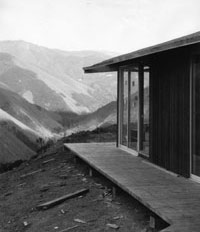 While in France I saw paintings, paintings and more paintings and my head was swimming with them. Usually in those days I had the museums to myself and whomever I was with at the time. They were quiet places of study and immersion for me. My future wife, Heidi Elsaesser was in Florence studying at the time and I went there often. I nearly drowned in paintings and sculpture and architecture and gardens and history and music in small outdoor gardens, not to mention wine, Marie Brizzard, Marc and the women. To this day I still paint off those early experiences of seeing the art because like a really rich and powerful book one reads one can never experience the surprise and awe one feels upon reading it the first time. Other kinds of things occur on second readings, but ah, that first reading. The big Manets were very powerful but the ones that have been the most inspirational are the little ones. They really taught me that art needed no narrative. Like his asparagus [A Bunch of Asparagus, 1880], just doing it with love and depth of purpose was enough.
While in France I saw paintings, paintings and more paintings and my head was swimming with them. Usually in those days I had the museums to myself and whomever I was with at the time. They were quiet places of study and immersion for me. My future wife, Heidi Elsaesser was in Florence studying at the time and I went there often. I nearly drowned in paintings and sculpture and architecture and gardens and history and music in small outdoor gardens, not to mention wine, Marie Brizzard, Marc and the women. To this day I still paint off those early experiences of seeing the art because like a really rich and powerful book one reads one can never experience the surprise and awe one feels upon reading it the first time. Other kinds of things occur on second readings, but ah, that first reading. The big Manets were very powerful but the ones that have been the most inspirational are the little ones. They really taught me that art needed no narrative. Like his asparagus [A Bunch of Asparagus, 1880], just doing it with love and depth of purpose was enough.
 I was beginning to think about art much more abstractly although I could not yet formulate the idea in the work. [I moved] on to Paris where I lived in Montparnasse in a hotel. There was no possibility of a studio in those days as there was a severe housing problem. I hung at La Couple and Le Select and ate at Le Relais des Artistes et Intellectuels - Wonderful name, cheap student stuff. I couldn't work there so you know what I spent my time doing. I was ill quite a bit in Paris with the weather but I still dream of that place. I used to go around to Giacometti's place and look in the windows. He is to this day my most beloved sculptor. I did a myriad of things, not unlike all people who spend a lot of time in that city - worth ten years at graduate school. By 1961 I had returned to NY. I dove into the life again and used to fo to the Met to paint from the Masters, I could sometimes sit in one of the galleries all day painting, students were allowed to paint there under certain circumstances, and no one would come through.
I was beginning to think about art much more abstractly although I could not yet formulate the idea in the work. [I moved] on to Paris where I lived in Montparnasse in a hotel. There was no possibility of a studio in those days as there was a severe housing problem. I hung at La Couple and Le Select and ate at Le Relais des Artistes et Intellectuels - Wonderful name, cheap student stuff. I couldn't work there so you know what I spent my time doing. I was ill quite a bit in Paris with the weather but I still dream of that place. I used to go around to Giacometti's place and look in the windows. He is to this day my most beloved sculptor. I did a myriad of things, not unlike all people who spend a lot of time in that city - worth ten years at graduate school. By 1961 I had returned to NY. I dove into the life again and used to fo to the Met to paint from the Masters, I could sometimes sit in one of the galleries all day painting, students were allowed to paint there under certain circumstances, and no one would come through.
I would stop by the metropolitan Opera a couple times a week and if you had [student] ID you could go in for free in SRO [Standing Room Only]. I saw all the greats from Dame Joan Sutherland to Tebaldi, and of course the one and only Callas but only in one act at a time. I still only know certain operas in one act. I would go to the YMHA [Young Men's HebrewAssociation] on a regular basis. They had an incredible program and I heard all the great poets read from their works Eliot, Auden, Ginsberg, Dylan Thomas who I met at the White Horse Bar, and many, many more. I was also a great jazz buff and spent a lot of late nights at the Village Gate, Vanguard, Five Spot, Café Bohemia. I saw John Coltrane with Miles Davis before Miles had his first hit record and I was at the Gate when Bill Spot to hear Thelonius Monk. New York was booming withtalent and it was not a problem of large crowdsbecausethis stuff was nt headlins like it is now and you could move around easily without a lot of money. One drink at those places and [you could] listen all night. There weren't culture vultures then and it was fairly underground. God how the world has changed!!!
 I decided in 1962 to move to Big Sur, California. I had met Joan Baez and Bob Dylan in Boston where they were playing in little places in Cambridge. Joan was going to move there and I did. Then both of them hit it big. I met some incredible people again. I got to know Miller, the photographers Ernst Haas and Brett Weston, as well as a myriad of folk singers. I began to paint in a mode a little bit similar to Joan Mitchell but more representation. Color began to creep into my idea of what a painting should include as an expressive force. I think it was due to my exposure to Diebenkorn. You must realize that now I am nearly 30 and have never exhibited. I had little or no confidence and was very shy about my paintings. I am not shy as a person but these things I make are so close to what I feel is my psyche that I feel raw in front of them. As if all my nerves were exposed for all to see. To this day I have no idea of what the quality of my paintings is, in terms of good or not so good. [It's] a conundrum to me.
I decided in 1962 to move to Big Sur, California. I had met Joan Baez and Bob Dylan in Boston where they were playing in little places in Cambridge. Joan was going to move there and I did. Then both of them hit it big. I met some incredible people again. I got to know Miller, the photographers Ernst Haas and Brett Weston, as well as a myriad of folk singers. I began to paint in a mode a little bit similar to Joan Mitchell but more representation. Color began to creep into my idea of what a painting should include as an expressive force. I think it was due to my exposure to Diebenkorn. You must realize that now I am nearly 30 and have never exhibited. I had little or no confidence and was very shy about my paintings. I am not shy as a person but these things I make are so close to what I feel is my psyche that I feel raw in front of them. As if all my nerves were exposed for all to see. To this day I have no idea of what the quality of my paintings is, in terms of good or not so good. [It's] a conundrum to me.
Chapter 3
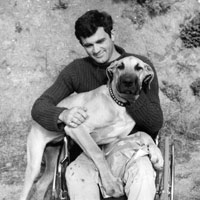 It would be great if we could remove the cult of personality from all this business of painting. There really is so much of it and the varied dreadful philosophies of artists. I think that the individual manifestos of art are extremely dull in most casess. The ones that aren t so dull are the ones in the early part of the last century that were written by groups of artists. What I would hope to achieve with my paintings is a dialogue on the nature of painting. Abstract painting!! What a terrible designation. To my eye what non-objective painting (another dreary word) is is no different than painting has always been. Painting has always been annotation and I do not see what difference there is between the annotations of El Greco and the annotations of Bill Jensen or the Chinese scroll paintings. They are all leaps of imagination. I am not talking about the eyes of the unseasoned viewer here; they are left to their own devices when a non-objective painting is put to them. It does not seem to me that the person who prides himself on his love of painting should be able to make the transition from paintings of sunflowers to paintings that have no sunflowers. All of the same criteria apply.
It would be great if we could remove the cult of personality from all this business of painting. There really is so much of it and the varied dreadful philosophies of artists. I think that the individual manifestos of art are extremely dull in most casess. The ones that aren t so dull are the ones in the early part of the last century that were written by groups of artists. What I would hope to achieve with my paintings is a dialogue on the nature of painting. Abstract painting!! What a terrible designation. To my eye what non-objective painting (another dreary word) is is no different than painting has always been. Painting has always been annotation and I do not see what difference there is between the annotations of El Greco and the annotations of Bill Jensen or the Chinese scroll paintings. They are all leaps of imagination. I am not talking about the eyes of the unseasoned viewer here; they are left to their own devices when a non-objective painting is put to them. It does not seem to me that the person who prides himself on his love of painting should be able to make the transition from paintings of sunflowers to paintings that have no sunflowers. All of the same criteria apply.
Read More... click again to close.
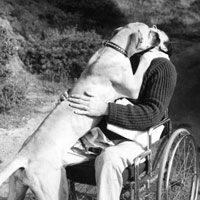
I maintained my studio in New York but I stayed in Big Sur until 1964. Heidi Elsaesser showed up, stayed and we decided to get married. After being married for a while and the realization that I had no way to make a living nor did my wife who was also a painter, I decided I had to go back to school. I finished about three years of core courses at a small college [Monterey Peninsula College] and got fed up and decided to apply at Yale School of Art and Architecture. I had now been painting for 10 years and to my absolute amazement I was accepted into graduate school. The Chair at the time was Jack Tworkov who felt that I had done my undergraduate art study. Also there [were] Al Held, Bernard Chaet, Gabor Peterdi the great printer. The school was based on visiting artists and they all came to teach while I was there. These were the halcyon years of Yale. The class before me was Richard Serra, Brice Marden, Nancy Graves, among others and in my class was John Borofski, Michael Craig-Martin and Jennifer Bartlett all who have gone to fame, infamy or fortune. These should have been the great years for me but I bridled a bit at University. I did well due to my experience at painting for so many years. I met everyone in the art world for Tworkov kept them pouring through the school to teach on a limited basis which was his philosophy and his genius. His years as chair were the best years at Yale Grad with Bucky Fuller, Clem Greenberg, Harold Rosenberg, Frank Stella, Paul Rudolph, and a lot more.
I was still painting in the same manner, sort of pseudo Joan Mitchell. The discussion at Yale was in the formalist vein with little content in any discussion except for Tworkov whose forte was philosophy and he would talk a lot about the reasons and philosophy of art. I had a tough time after the first year. I was hospitalized from May until October in 1965 after surgery and my wife Heidi unexpectedly died. I returned to school but it was a bit of a lost year for me but in the end they awarded me both my BFA and my MFA in 1966. I went to NY and lived in Chelsea where I had my loft.
Chapter 4
 Fragonard, Velwith, Cezanne, Manet, Monet, Rembrandt, Dove, Rothko, Turner, Constable, Pollock these are the artists that touch me the most deeply. It has to do with the touch of their hand or the touch of the brush to the surface. These artists are able to thrill me amazingly. It is that language of the paint strokes and touches that are I think the secret of painting. Why does this thing set me to wanting to paint continually? I think it's a kind of language of sensuality that is so very eternal in good painting. Paint annotation started with the touches of paint and hands and color to the surface of cave walls, as at Lascaux.
Fragonard, Velwith, Cezanne, Manet, Monet, Rembrandt, Dove, Rothko, Turner, Constable, Pollock these are the artists that touch me the most deeply. It has to do with the touch of their hand or the touch of the brush to the surface. These artists are able to thrill me amazingly. It is that language of the paint strokes and touches that are I think the secret of painting. Why does this thing set me to wanting to paint continually? I think it's a kind of language of sensuality that is so very eternal in good painting. Paint annotation started with the touches of paint and hands and color to the surface of cave walls, as at Lascaux.
The sensibility that those [Paleolithic] artists showed to the rock and to the color application is a miracle of human desire to communicate. To communicate by the visual perception that is possible to us if we train ourselves to see it. Paint annotation is no less a miracle of human endeavor than was the ability to spell and read words to communicate. It is of course a different medium and conveys much different information. Painting of the kind that I am speaking is a reference back to those tiny fleeting moments in our short life
when we see something at a glance, a ray of light, a color of a flower in it s particularity not in it s whole, moments in time which register on our eyes to our brain and give a start, a nanosecond of breathtaking vision and then are filed away in our memory. Thousands of them occur in our lives and are inarticulate therefore unsaid.
Read More... click again to close.
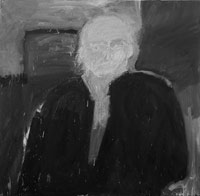 The painter in me wants to recall those mini-seconds. I want to be mnemonic with the way I pull these kinds of things out of the dumb material to call up those tiny flashes of recognition. I place [a random pattern] on the surface of the canvas, against this I try to play out the touches of what I remember. By playing out the annotations on top of the merely random process that I have put there before it, it is hoped that a contrast is created so that the annotations become the obvious recounting of painterly memories. The reason that the paintings become abstract is that there are numerous different nanoseconds of memories here all in one place but are somehow organized in my visual memory and are therefore related. There is absolute trust here with the intuition of the painter. Years of making associations based in an artistic judgment and sensibility. Sure hope it works!!!
The painter in me wants to recall those mini-seconds. I want to be mnemonic with the way I pull these kinds of things out of the dumb material to call up those tiny flashes of recognition. I place [a random pattern] on the surface of the canvas, against this I try to play out the touches of what I remember. By playing out the annotations on top of the merely random process that I have put there before it, it is hoped that a contrast is created so that the annotations become the obvious recounting of painterly memories. The reason that the paintings become abstract is that there are numerous different nanoseconds of memories here all in one place but are somehow organized in my visual memory and are therefore related. There is absolute trust here with the intuition of the painter. Years of making associations based in an artistic judgment and sensibility. Sure hope it works!!!
I have said before I do not differentiate between non-objective painting and figurative, it is all the same to me. When Fragonard makes a stroke in order to make the head of a lovely girl, I see the stroke as telling me more than this is the head of the girl. I see the artist saying, I will show you the head of a girl but I want you to see the magic of your eyes and senses. So it is not really about the girl, although it can be. Dichotomy, ambiguity, wizardry, whatever [is] the task of the great artist.
Velasquez will show you these absolutely dull morose people that he must live with, [as in the painting Las Meninas] and right there in front of you the dance of paint will begin: along the lace, down over the gold, into the black, out to the hair down to a pair of glistening shoes. The dog [is] more alive with the paint than the people. There are things being said by Velasquez. Things that one can talk about in terms of history, sociology, et cetera, but mostly the great artist is saying that the annotations of brilliant paint are the true life of the visual.
Cezanne watched his hand in front of him. He was not making cubes and cones. He was watching his hand and the sensibility of that watery paint he used to trail a language of his line. His touch was so important to him that he had a hard time being touched by another human being. It meant too much to him and he could feel the meaning in it. The light that he lived in and could never really leave [during] his life had created zillions of nanoseconds of memories of being caught by those zapping glances of light flickering and infusing as it does in Provence.
Manet, an artist of great sophistication and worldliness, could do a myriad of things as an artist and all of them well. Where he most talks to the artist, and not the art public, is in paintings like his A Bunch of Asparagus. He tells a lot with those few brushstrokes or genius. Repose. He has had a moment in the garden and the visual memory has been triggered. The little annotations are made like a bolt of lightening and it is done. Who with the stature of Manet would paint such a thing and why? [There is] a legacy of the visual stream that resides in his visual memory and without artifice pure paint annotation for no other reason than the application of a mnemonic desire. Manet knew about fashion in art, protest in art, shock in art, power, the psychological, the sociological and the sensual. He knew also that the artist s true work is the visual appeal to the visual mind.
Where was it that J.M.W. Turner was trying to take us on those incredible Verne-like, fog besotted journeys? [He was] one of the truly great illustrators if he wanted to be exact and precise. When talking about the mnemonics here I am not talking, as in the case of Turner, about the memory of the Thames of London. I am talking about the mnemonics of glimpses that could take place anywhere in the worlds that people live. For some reason I have seen the animals at Lascaux. Not the animals themselves but all of the salient information in the painting of them. They are not tens of thousands of years ago. They are in the nanoseconds of recognition of the beauty of seeing without the objects themselves. So there is Turner. Not creating a style or obfuscating the Realistic, simply going to the true life of the visual memory.
Pollock and Rothko were very brave fellows. I am not certain they are still appreciated for the nerve that they were able to show with their pictures. Not having an object was a step off the old ladder. But they were led there by the great artists: that wonderful confidence in the heritage given them by Monet flattening the picture by painting looking down sans horizon, so he could call up all the visual memory without hindrance; by Rembrandt illuminating everything with the light dancing across things out of the black; Pollock recalling the glimpses of light through the briars and grasses that explode on the prairies in spring and the overabundance of black in the winter; and Rothko with the touch of a silk feather from one side of the canvas to the other, stretching his feelings of visual delight with his visual memory to the point of gossamer. Painting can be "about" anything but truly great painting must have the elements as I have tried to describe them. It is what I hope to do. I feel the completely abstract is the best way to try to get there.